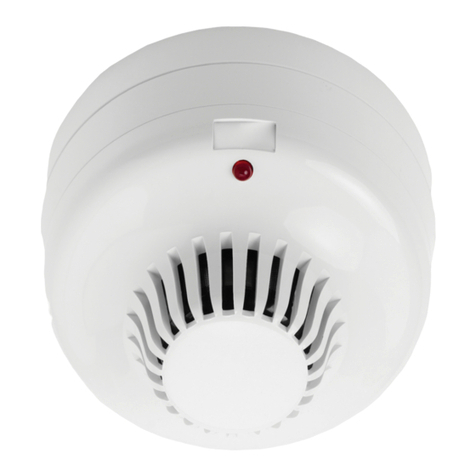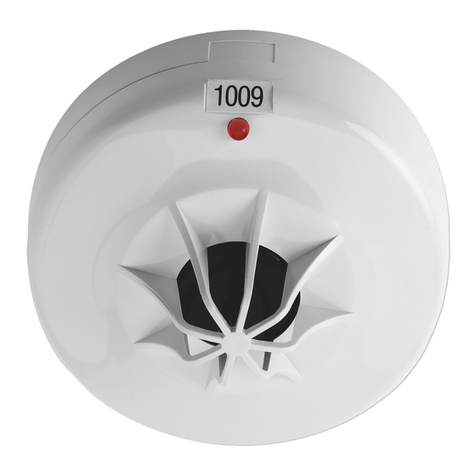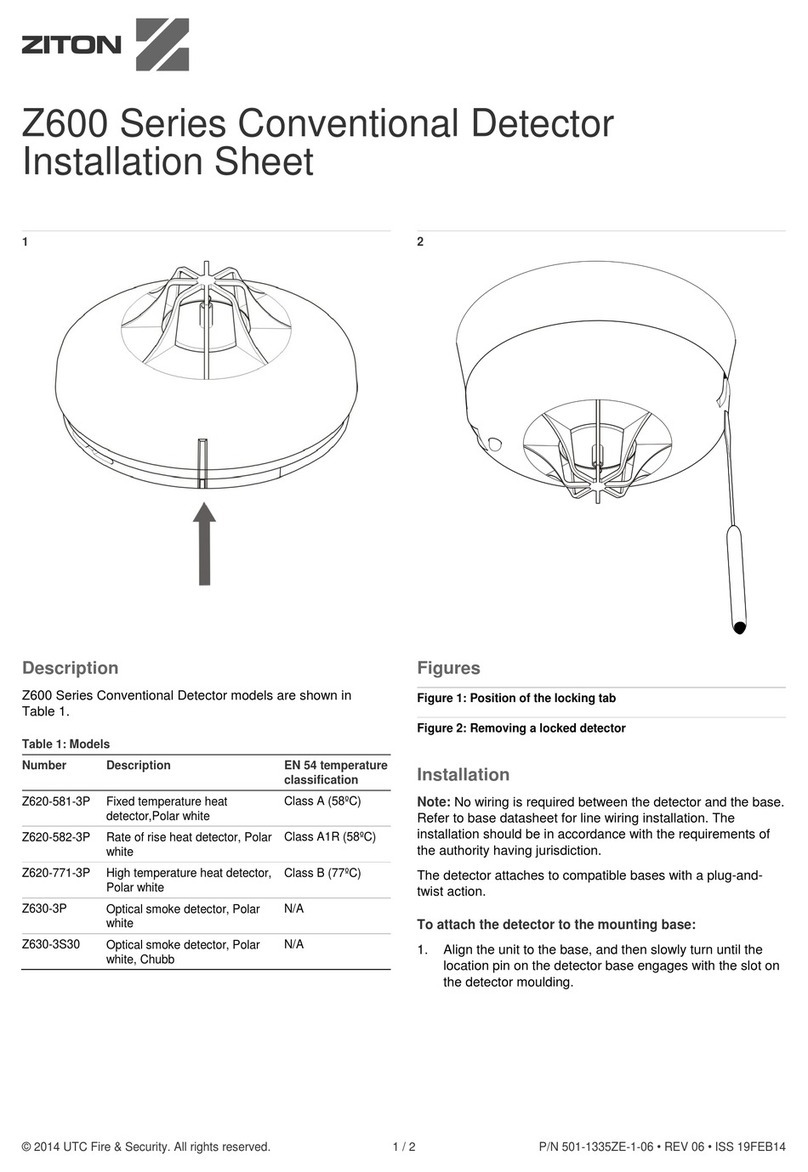
3.2. Detector Positioning In Atrium.
If the detector is to be placed in an atrium, or near glass/polished surfaces, the prism(s) should be offset from
the central line of sight (approximately 300mm), and angled back to the beam detector. This can be either on
the vertical or horizontal axis. This will reduce the amount of spurious returned signal from the glass/polished
surfaces. The reflected signal from the prism(s) will be returned to the detector in the normal way.
4. Installation.
Pre-installation at Ground Level.
Confirm that all parts have been supplied as listed in the parts list. See page 10.
Select the required alarm threshold using configuration switches 3 and 4 (See page 8, fig. 4. for switch
configuration settings). The factory default setting is 35% this should be adequate for most environments, if the
Detector is to be installed into an exceptionally dirty environment change the threshold to 50%.
Select the required address using address switches 1 to 7 (See page 9, Table 1. for address switch settings)
where 1 is ‘ON’ and 0 is ‘OFF’. The factory default setting is address 1.
Shown below is an example of address 85 (1+4+16+64 = 85).
SW1 SW2 SW3 SW4 SW5 SW6 SW7 SW8
Switch Value 1 2 4 8 16 32 64 X
Switch Position ON OFF ON OFF ON OFF ON X
Logic 1 0 1 0 1 0 1 X
The Detector Head Assembly is now ready for installation. If configuration switches 3 and 4 require resetting
after installation, a power down reset is required (entering into Alignment Mode can also be used as a reset).
4.1. Detector Head Assembly Installation.
Remove the outer cover before installation; this is only to prevent the cover becoming dislodged during
handling.
Do not mount on plasterboard or cladded walls as these surfaces do, and will move.
Determine the position of the Head Assembly, which must be mounted on a solid structure between 0.5 and
0.6 metres below the ceiling, and no closer than 0.5 metres to an adjacent wall or structure. Ensure that there is
a clear line of sight to the proposed position of the prism(s), which is to be mounted on a solid structure
between 5 and 100 metres directly opposite the Detector (range dependent on model).
Using the template provided mark and install all 4 fixing points to the structure. The rear mounting plate of the
Detector Head Assembly is provided with 4 keyhole slotted apertures to allow for easy installation onto the 4
fixing points. Install the detector on the four mounting points.
Replace the outer cover.
Terminate the field wiring. See section 8.
Offset Prism(s) position and beam path
Normal Prism(s) position and
central line of sight Detector
head
Plan View
www.acornfiresecurity.com
www.acornfiresecurity.com
































